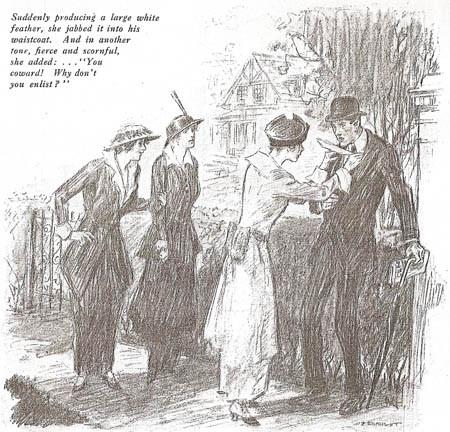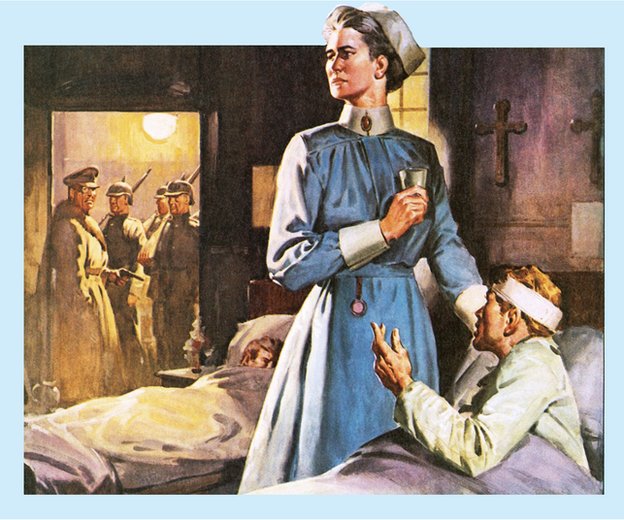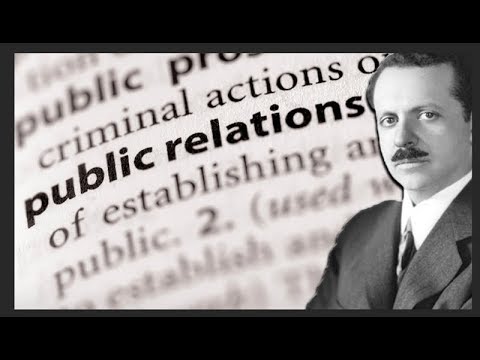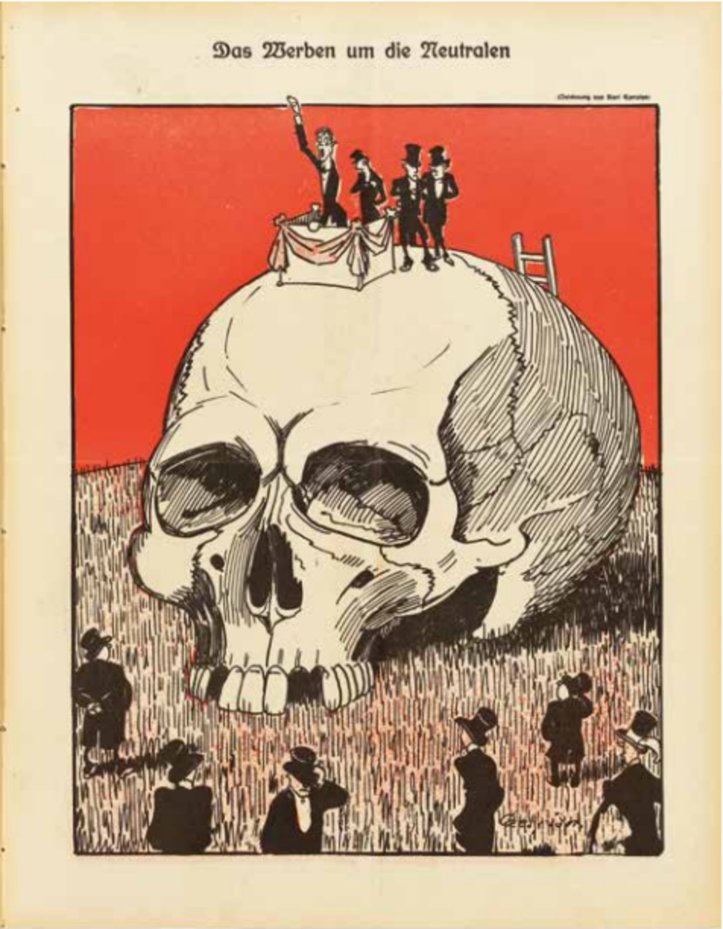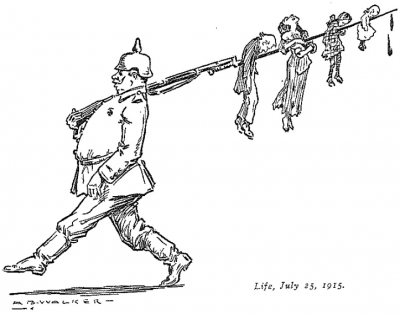
These stories are not unique cases from a remote war. The same methods are constantly rinsed and repeated, the mentality in our ruling elites is the same, and the risk of a major conflict is as great today as in 1914.
These examples concentrate mostly on British/American perception management and propaganda. First of all, because they are masters of the art, and secondly, as victors they still dominate the narrative.
Arthur Ponsonby and Falsehood in Wartime
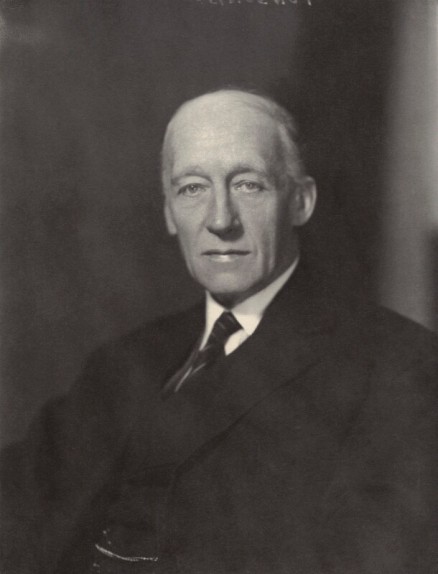
After the Great War came a huge backlash of disillusion and revulsion. Calmly analysed, most of what had been told in the war turned out to be lies and half-truths. «Falsehood in War-time, Containing an Assortment of Lies Circulated Throughout the Nations During the Great War» was the title of a book published in 1928. Written by Arthur, Ponsonby, it discussed 20 instances of lies in wartime.
The contents of the book can be summed up in the Ten Commandments of War Propaganda:
- We do not want war.
- The opposite party alone is guilty of war.
- The enemy is the face of the devil.
- We defend a noble cause, not our own interest.
- The enemy systematically commits cruelties; our mishaps are involuntary.
- The enemy uses forbidden weapons.
- We suffer small losses, those of the enemy are enormous.
- Artists and intellectuals back our cause.
- Our cause is sacred.
- All who doubt our propaganda, are traitors.
The Enemy Is the Face of the Devil

The perception of German atrocities in World War 1 has had is up and downs during the decades. They ‘Huns’ were indeed quite ruthless, and freely executed several thousand suspected franc-tireurs and hostages when they invaded Belgium and Northern France in 1914.
However, the theme of barbaric, nun-raping, baby-bayonetting Huns was so carried to excess by the Entente propaganda machine that there came a backlash in public opinion after the war. By the 1920s, the disillusionment with the war and its aftermath was so great that all of these stories were dismissed as atrocity propaganda, which again would backfire in 1939, when there was reluctance to believe stories of – this time real – massive German atrocities.
The same theme was used more recently, with the infamous tale of «Iraqis ripping babies from incubators in Kuwaiti hospitals», in the warm-up to the Gulf War in 1990. Before the US Congress, a young woman in tears testified how she as a nurse in Kuwait witnessed Iraqi soldiers ripping prematurely born babies out of their incubators, leaving them to die on the floor. The story was later repeated by an equally moved President George HW Bush.
The public later found out that the woman was in fact not a nurse, but the daughter of the Kuwaiti ambassador to Washington, and the story was concocted as part of the propaganda effort by the PR-Agency Hill & Knowlton.
Mussolini Changes His Mind — Italy Should Join the War
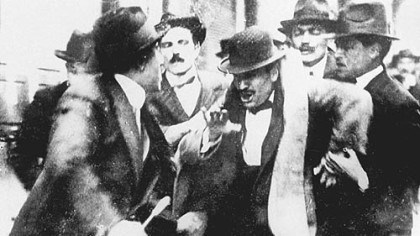
Italy at first stayed neutral, then chose to join the Entente. This turned out to be a really bad decision, killing a generation of young men, and with not many gains to show for it in the peace treaties.
The decision was partially helped by subsidies from English and French intelligence to the Italian press. The Italian journalist Benito Mussolini (picture: in white coat, arrested during a scuffle with police in 1914) had a change of heart, and went from a leading socialist and war opponent to a fierce advocate of Italy joining the war.
According to a note written in November 1922 by the French secret services in Rome, Mussolini (who was described in another note from the same service as «an agent of the French Embassy in Rome») had in 1914 collected ten million francs «to support Italy’s war alongside the allied powers». In 1915, he was one of the founders the Fascist movement, which later took power in 1922.
The Difference Between Declared War Aims and Real Ones
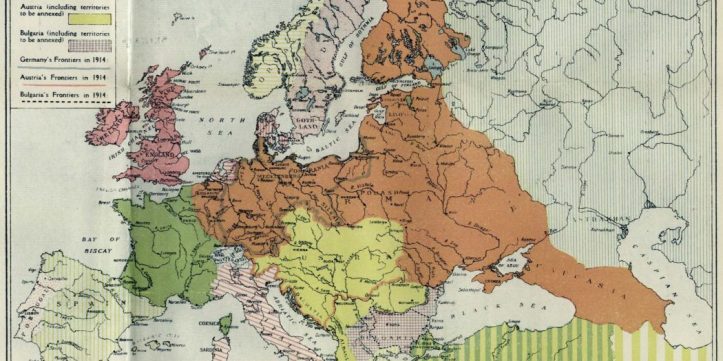
In August 1914, when an almost unanimous German parliament voted yes to war, it was presented to the German public as a defensive Schutzkrieg against conniving enemies. With the exception of one member, Karl Liebknecht, the entire 110-member delegation from the Social Democratic Party bowed to the war euphoria and voted yes to war loans.
The perception presented to the public during the first few years of fighting, was of a Germany fighting a defensive war for survival, not a scheme for imperial aggrandizement. But in reality, already in September 1914, in the first few weeks of the war, a secret plan for an extensive redrawing of Europe’s borders was prepared for Chancellor Bethmann-Hollweg, the Septemberprogramm (see map).
After the Brest-Litovsk separate peace with the Bolsheviks in 1917, the eastern part of these war aims were achieved, where Germany occupied or created puppet governments in Poland, Ukraine, the Caucasus and Baltic areas, and created a dependent state in Finland.
Although a victory, this led to great disillusionment in the German liberal-left, which so far had supported a war to preserve the country. Now he myth of a defensive war was exposed as a lie, and the treaty showed it to be a war for imperial expansion.
The Sinking of the Lusitania
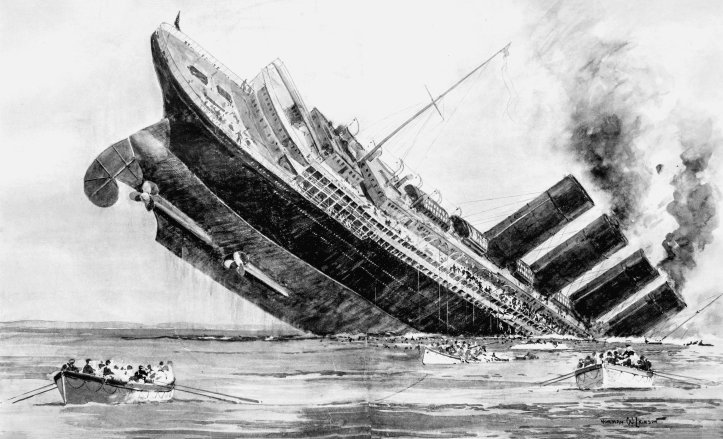
In May 1915 the British Government was in trouble. The European war was not going well. Instead of reacting to aggressive British blockades by begging for mercy, Germany was sinking more and more British ships with her U-boats.
The Lusitania was sunk by a German submarine on Friday May 7 1915, 12 miles off the coast of Ireland, killing 1198 people. The ship was running at two-thirds speed and in a straight line, rather than the recommended zigzag used to avoid torpedoes. The passengers were mostly US citizens (including millionaire Alfred Vanderbilt).
Her cargo consisted mostly of undeclared weapons and explosives, a fact finally confirmed in 1960, and which explained why she sank so fast. She was bound for the UK, sailing all alone, inexplicably without escort from the Royal Navy and right into a known U-boat hunting ground.
No members of the press even considered asking why Lusitania had been steaming so slowly and in a straight line, or why the British Admiralty had chosen to withhold the usual naval escort.
The numerous travel warnings posted by the German government in US newspapers, warning people they traveled on British shipping into British waters at their peril, was left out of the narrative. The German explanation, that the Lusitania was a legitimate target because she carried armaments, was dismissed out of hand.
And totally forgotten was the aggressive policy of starving Germany to its knees that had prompted the U-boat campaign in the first place. After the war began in 1914, Britain immediately began a naval blockade of Germany. Since even food was classified as “contraband,” the Germans had to ration food. By all estimates, several hundred thousand people ultimately died of starvation due to the blockade.
The sinking of the Lusitania was one of the main causes that brought the United States into the war, saving the war for the British.
An Inconvenient Peace Offer: “What Does He Want to Butt In for?”
In July 1915, Pope Benedict XV published the apostolic exhortation «To the Peoples Now at War and to Their Rulers.» Two years later, in 1917, this became The seven-point plan, a peace note presented to the warring parties. It was based on a peace linked to justice rather than military conquest, cessation of hostilities, a reduction of armaments, a guaranteed freedom of the seas, international arbitration, and Belgium restored to independence and guaranteed «against any power whatsoever.» (But it tacitly implied that Germany would gain some territory in the east).
The initiative failed: Although the Central Powers (Germany, Austria-Hungary) were positive to the mediation after three years of exhausting war, no one on the Entente side showed any interest. (The collapse of the Russian imperial government a few months later reduced the German willingness to negotiate.) Britain did not even show the Holy See the common courtesy of a proper reply. The French and Italian replies were hostile, and the rejection on behalf of the alliance was made by president Woodrow Wilson of the United States, who had initially remarked of the pope’s proposal: “What does he want to butt in for?»
The decision to reject any proposal from the Vatican was already decided in 1915. The threat was that a peace mediation from someone like the Pope might create so much pressure from a war-weary populace that it might just gather enough momentum to force the powers to accept.
The secret Treaty of London (1915), committing Italy to the Entente (Britain, France and Russia) contained a clause, article 15, where Italy is given carte blanche to do whatever is deemed necessary to silence the Church: «France, Great Britain and Russia shall support such opposition as Italy may make to any proposal in the direction of introducing a representative of the Holy See in any peace negotiations or negotiations for the settlement of questions raised by the present war» .
From Women’s Liberation to a Tool for the State
Emmeline Pankhurst addressing a pro-war rally in 1914
There is nothing new about liberal social reformers falling into lockstep when the country goes to war.
British Emmeline Pankhurst was the most prominent member in the Women’s Suffrage movement. She founded the Women’s Social and Political Union (WSPU) in 1902. After a remarkable and highly radical campaign for women’s rights, including hunger strikes, arson and window smashings, the group changed from a reformist program to a hard right reactionary nationalism as soon as the war broke out.
In 1914-15, bands of women roamed the cities of England handing out white feathers of cowardice to men wearing civilian clothes. The ‘White Feather Brigade’ was established by admiral Charles Fitzgerald, a war hawk who wished to see Britain institute mandatory military service. The campaign spread through the country with astonishing rapidity.
The highly successful White Feather campaign, shaming British men to enlist.
Not unconnected, the WSPU successfully carried out secret negotiations with the government, and on the 10th August 1914, the government announced it was releasing all suffragettes from prison. After receiving a £2,000 grant from the government, the WSPU organised a pro-war demonstration in London. Members carried banners with slogans such as «We Demand the Right to Serve» and «Let None Be Kaiser’s Cat’s Paws».
Pankhurst founded the Women’s Party in 1917. Excerpts from the program:
(1) A fight to the finish with Germany.
(2) More vigorous war measures to include drastic food rationing, more communal kitchens to reduce waste, and the closing down of nonessential industries to release labour for work on the land and in the factories.
(3) A clean sweep of all officials of enemy blood or connections from Government departments. Peace terms to include the dismemberment of the Hapsburg Empire.
(8) Irish Home Rule to be denied.
In the Suffrage Movement’s defense, many members chose a different and more honorable stance, like her daughter Sylvia Pankhurst. In 1915, Sylvia gave her enthusiastic support to the International Women’s Peace Congress, and she later became a leading international voice in the resistance to Mussolini’s attack on Ethiopia.
Edith Cavell – Nurse (And a Hundred Years Later, a Spy After All)
Few incidents created bigger outrage in the First World War than when the British nurse Edith Cavellwas executed by firing squad for helping Allied soldiers escape occupied Belgium. In the trial, she admitted to leading a people smuggling network.
But the German charges also claimed that Cavell was a spy, sending sensitive intelligence through the same network, a claim which was strongly denied by both Cavell and the British government.
The government’s insistence on her innocence was taken as implicitly true in Britain, and she became a symbol for victims of Hunnic habitual cruelty. This perception also had great impact on public opinion in the still neutral United States. The implicit presumption of innocence lingered for a many years, and was a useful propaganda tool for many decades.
In a BBC-program in 2015, a hundred years after Cavell’s death, Stella Rimington, former head of the MI5, revealed that she had discovered documents in Belgian archives indicating that Cavell was in fact a spy.
This is of course a limited hangout. MI5 would have known this all along, being Cavell’s boss, but naturally chose to keep quiet about it, since the idea of her innocence was so convenient.
Rimington said her evidence showed «that the Cavell organisation was a two-pronged affair» and that espionage was the other part of its clandestine mission.
The documents included an account by Herman Capiau, a young Belgian mining engineer who had brought the first British soldiers to Cavell in 1914 and was an important member of her network.
He wrote: «Whenever it was possible to send interesting intelligence on military operations, this information was forwarded to the English intelligence service punctually and rapidly.»Capiau referred to information about a German trench system, the location of munitions dumps and the whereabouts of aircraft.
Since she was in fact guilty, it would make her case similar to the famous spy Mata Hari, who was unceremoniously executed by the French in 1917, without any international outcry. Of course, Cavell’s case is worse, since she used a humanitarian cover for her activities, putting all medical personnel under suspicion.
Most of Our Opinions Are Formed by Men We Have Never Heard of
After the United States joined the war in 1917, president Wilson founded a government agency, The Committee on Public Information, to drum up support in public opinion for the US Crusade for Freedom©.
A young man, Edward Bernays, started working for it, and quickly learned his trade there. He later became known as «the father of public relations», and a pioneer in the modern PR-industry, where he, among other things, arranged the media part of the CIA-regime change operation in Guatemala in 1954. The full quote from him is as follows:
«The conscious and intelligent manipulation of the organized habits and opinions of the masses is an important element in democratic society. Those who manipulate this unseen mechanism of society constitute an invisible government which is the true ruling power of our country. We are governed, our minds are molded, our tastes formed, our ideas suggested, largely by men we have never heard of.»
The Invasion of 1910 — A Book Commissioned to Tell the Public Who the Next Enemy Is
Ad in The London Times for the book (1906)
Describing an imagined German invasion of England, the book The Invasion of 1910 was written by William le Queux on commission from the press magnate Lord Northcliffe and serialized in his newspaper the Daily Mail in 1906. After the detente with France and friendlier relations with Russia, British elites circles agreed on who the next likely enemy would be. But the British public still wasn’t ‘with the program’, and a large campaign was started to prepare them mentally. In the years 1906-1914, a torrent of books and articles on the terrible Hun menace poured out from a number of authors, including Arthur Conan Doyle.
Bits by Bits a War Memorial Day Gets a New Meaning
Cadets march in the 2014 ANZAC day parade (Picture: Flickr/Chris Phutully)
World War 1 was a bloody affair for the Commonwealth countries. Most Australian country towns or even small villages have a cenotaph or monument with a shockingly long list of local men lost in WW1. ANZAC-day (on 25th of April, the anniversary of the Anglo-French campaign to conquer Gallipoli and the Dardanelles, where Australia played a part) was decided as a holiday in 1921 to commemorate these war dead, in a rather sombre spirit. The holiday and ceremony was a quiet affair for most of last century, apart from the usual right-wing forces trying to capitalize on it. It reached it’s nadir in the late 1970s, after the Vietnam war.
A marked change started in the 1990s, with a concerted and very well funded campaign from the government to militarize Australian history. Now the ceremonies are huge, military-political events, full of pathos, cant and sentimentality. By spending huge sums to connect the public idea of Australianness to a glorification of its military glory, it seems Australian participation, like in 1914 by choice, in the next bloody world war is inevitable – nothing learned Down Under.
Neutral Countries Are the Winners
This Swiss cartoon by Karl Czerpien, is captioned «The wooing of the Neutrals», where orators from the warring countries are trying to entice neutrals to join them. The different alliances spent large efforts to tangle neutral countries into their imperialistic intrigues (see the case of Italy above). For smaller neutral countries, war between the great powers is always a dangerous time, but by trying to stay neutral, they are rather better off than by joining an alliance. A lesson for our time, when small countries in Europe seem very eager to get the honor of being the battlefield in the next war.
1924 — The Pacifist Ernst Friedrich Shows the Real Faces of War
In 1924, in the book War against War, the German anti-war activist Ernst Friedrich breaks a taboo in war reporting, by showing real war injuries. Such horrific pictures were – and still are – generally very rarely shown in war reporting, both in the corporate media and in anti-war literature.
This unwillingness contributes, intentionally or just because the pictures are too shocking to handle, to an almost idealized image of war, where our dead are always beautifully serene and the wounded well wrapped in bandages.
*
Note to readers: please click the share buttons above. Forward this article to your email lists. Crosspost on your blog site, internet forums. etc.
This article was also published on the author’s blog site: Midt i fleisen.
Terje Maloy is a Norwegian/Australian blogger and translator.
All images in this article are from Creative Commons unless otherwise stated.
The original source of this article is Global Research
Copyright © Terje Maloy, Global Research, 2018
https://www.globalresearch.ca/propaganda-during-world-war-i-an-illustrated-account/5659679



